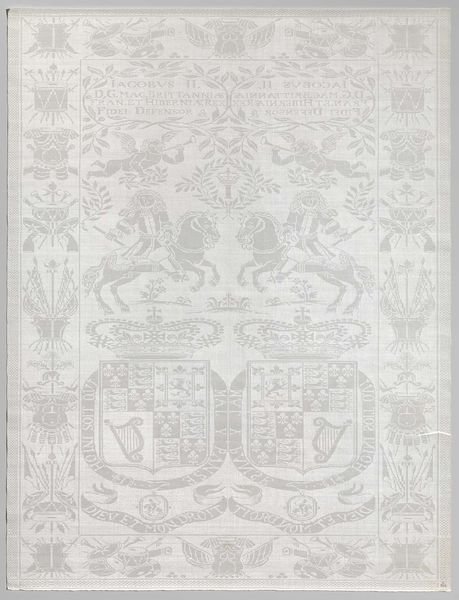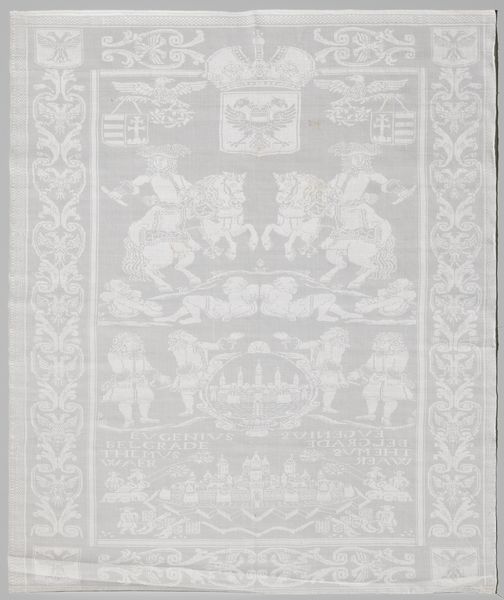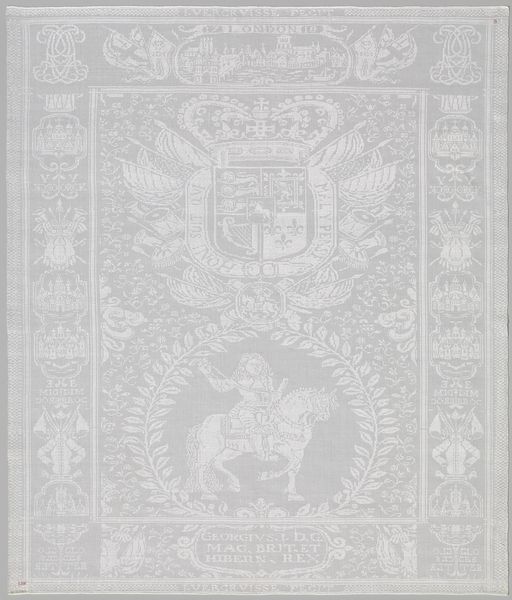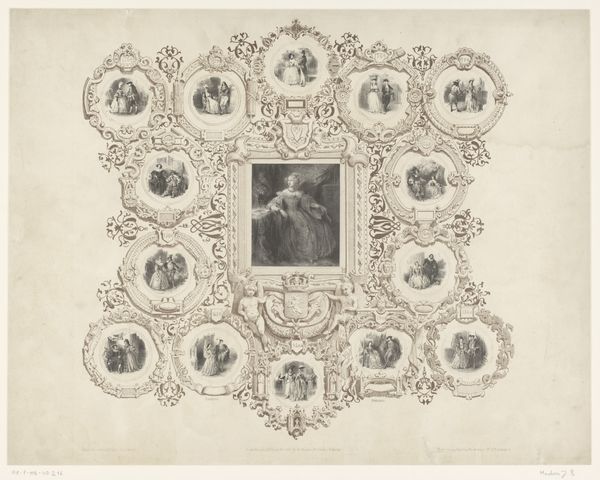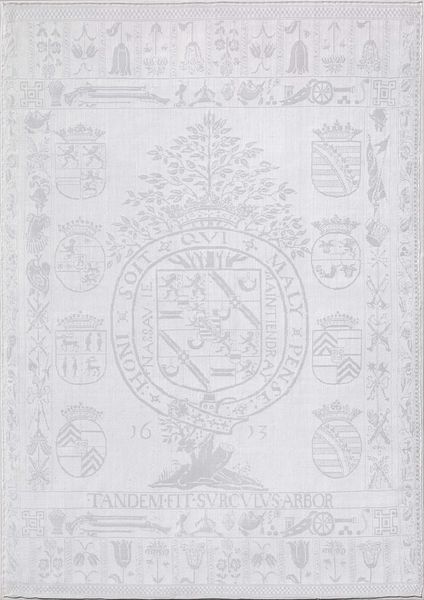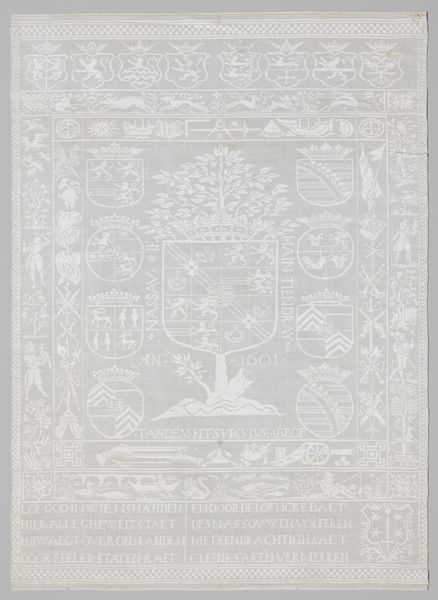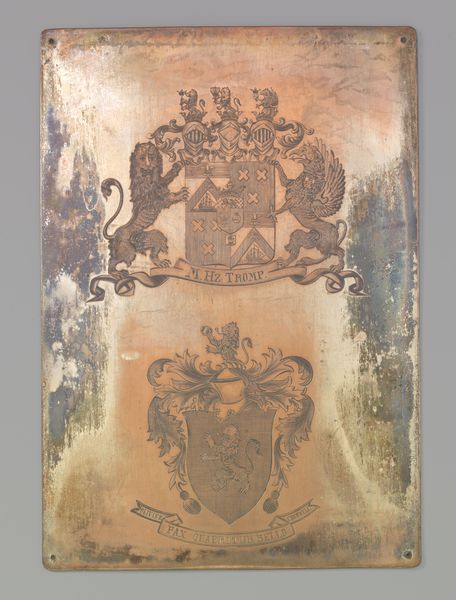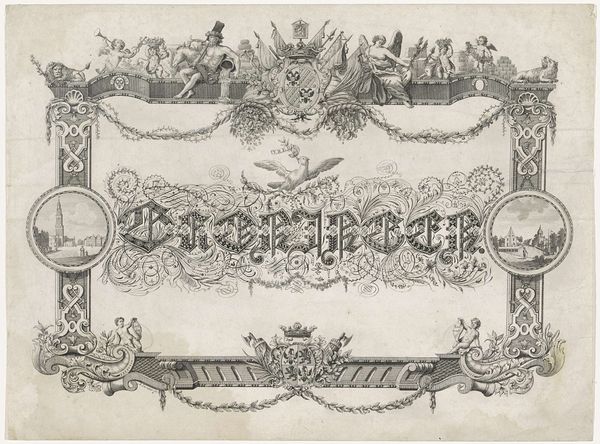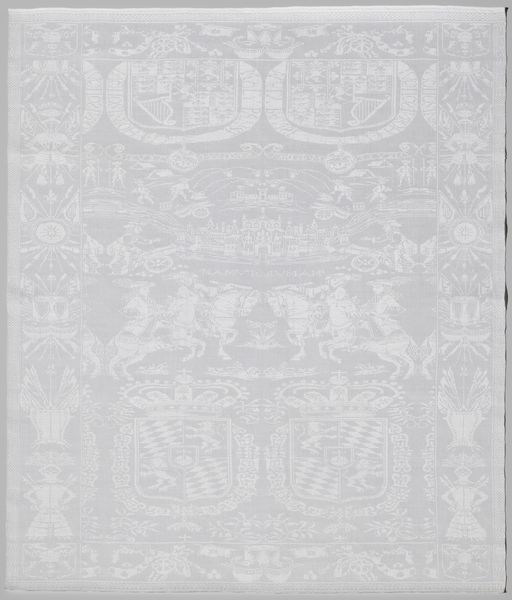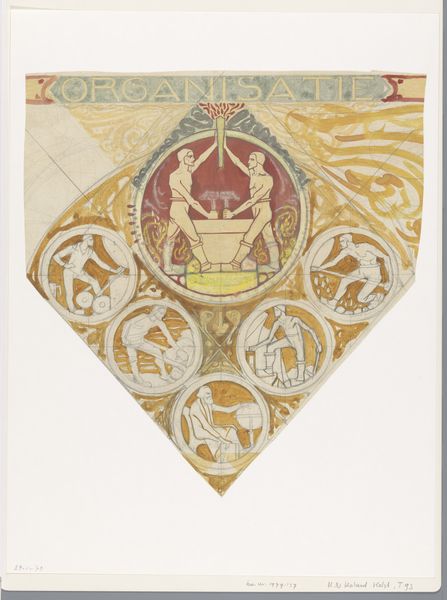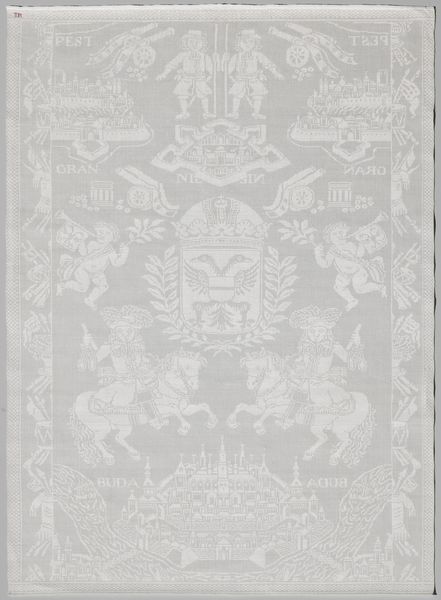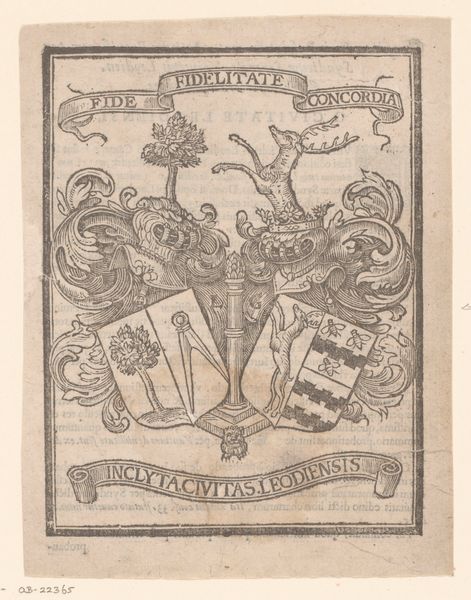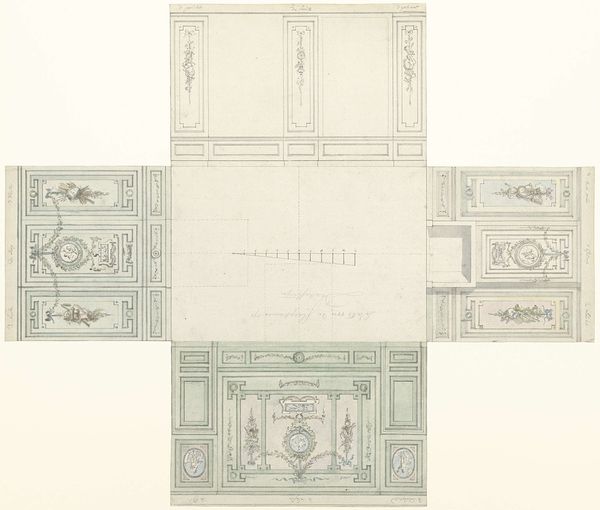
Portretten van Wilhelmina van Pruisen, Willem V, prins van Oranje-Nassau, Louise, prinses van Oranje-Nassau, Frederik, prins van Oranje-Nassau, en Willem I Frederik, koning der Nederlanden 1780 - 1849
0:00
0:00
print, engraving
#
portrait
# print
#
history-painting
#
academic-art
#
engraving
Dimensions: height 372 mm, width 493 mm
Copyright: Rijks Museum: Open Domain
Curator: This print, entitled "Portraits of Wilhelmina of Prussia, Willem V, Prince of Orange-Nassau, Louise, Princess of Orange-Nassau, Frederick, Prince of Orange-Nassau, and Willem I Frederick, King of the Netherlands", dates from between 1780 and 1849. It's an engraving from an anonymous artist here at the Rijksmuseum. Editor: It's interesting. My immediate feeling is one of distance. The pale lines and formal composition evoke a sense of separation from the subjects. It reminds me of an elaborate family tree, documenting lineage more than personality. Curator: Absolutely, it reflects the prevailing societal structures. Consider how portraiture during this period served as a tool for constructing and reinforcing dynastic power. Each portrait, set within its circular frame, emphasizes the individual's place within the Orange-Nassau lineage. It's about legacy, not intimacy. Editor: I find myself questioning that legacy. Who were these individuals beyond their titles? Wilhelmina, for instance, was known for her strong political views and influence. Where is that agency reflected here? This portrayal seems intent on projecting a certain image of docile royalty, which ignores their political complexity and context. Curator: The book at the top, flanked by family members, may point us in the right direction. It shows us a dedication to those values as well. We can see some insight into how these roles are inherited by these sitters based on class and familial context. Editor: It's the almost total lack of interaction between the figures, even visually. I want to know more about them. Are we meant to aspire to these rigid representations of identity? How does it shape Dutch identity? There is an obligation of loyalty and history being performed here. Curator: Precisely. And by understanding how such imagery operated historically, we can critically assess its contemporary echoes and question the power structures it perpetuates, too. Editor: It does leave me thinking about the nature of power, how representation solidifies narratives, and who gets to control them, historically, and even today. Curator: Yes, an artwork that serves not only to reflect its time, but to help us question it, as well.
Comments
No comments
Be the first to comment and join the conversation on the ultimate creative platform.
